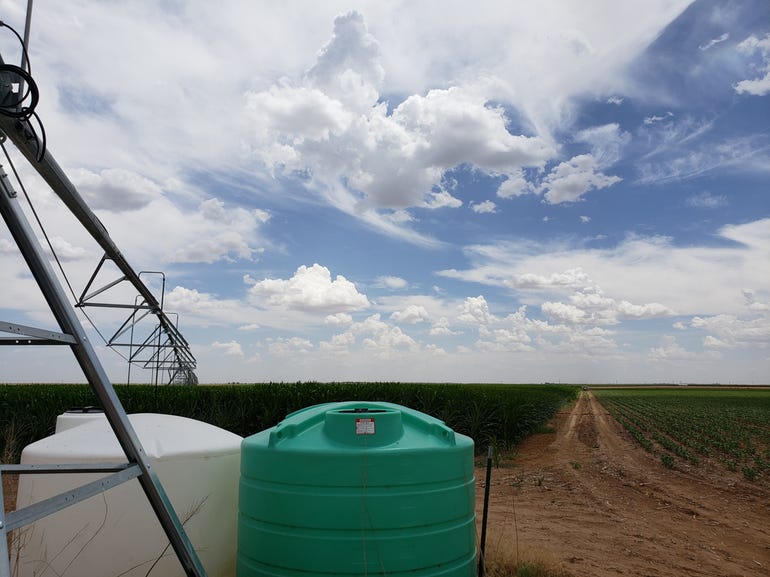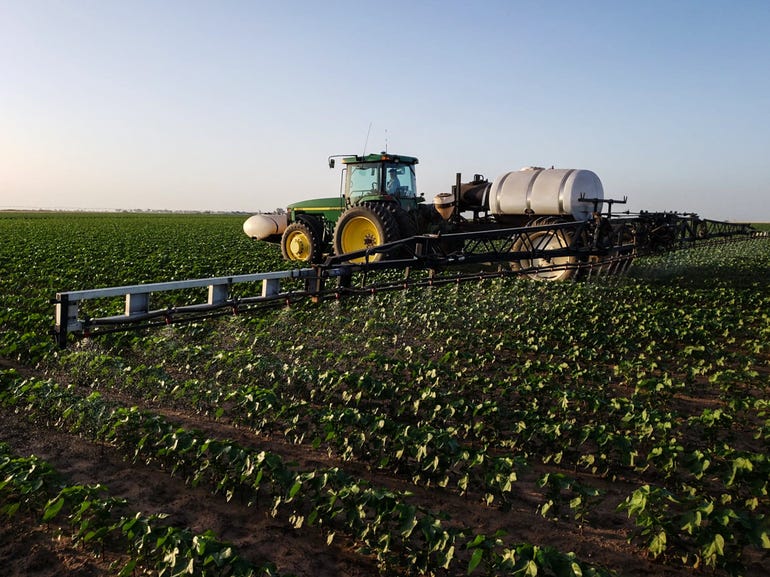December 17, 2018

Well, it’s been quite a year for agricultural law! Looking back, it has been interesting to see the variety of legal issues that have come up in the last 365 days. From a major class action settlement by Syngenta to new electronic logging device rules to nuisance litigation in North Carolina, there are numerous issues of which agricultural producers should be aware.
If you want to hear more about these topics, Paul Goeringer and I did a Year in Review joint podcast. You can listen here. {Since we recorded this episode, there have been updates in four out of our six topics…the law moves fast!}
Syngenta corn litigation settles for $1.5 billion.
The (nearly approved) settlement in the class action litigation against Syngenta related to MIR-162 corn seed is likely the biggest news of the year. As you may recall from this prior post, lawsuits were filed across the country by farmers, shippers, and agribusinesses when corn prices fell after China rejected corn shipments in 2013 due to the presence of this MIR-162 trait.

In April 2018, Judge Lungstrum, who was overseeing the Multi-District Litigation in the District of Kansas, granted preliminary approval for a nationwide settlement of claims for all farmers, grain elevators, and ethanol plants. The proposed settlement required Syngenta to pay $1.5 billion to the class–which included any farmers who offered corn for sale–whatever variety–between September 2013 and April 2018. Any farmers, elevators, or ethanol facilities meeting the class definition, then, had a decision to make. They could either opt out of the class (meaning they would not receive any portion of the settlement, but would still be able to file any individual claims they may have) or remain in the class, which would bar any future claims. Those wishing to remain in the class and obtain their portion of the settlement funds were required to submit a claims form by October 2018. [Read more here.]
Judge Lungstrum held a final approval hearing in November and issued an Order approving the settlement in December. According to statements from Class Counsel, the earliest possible time frame for settlement distribution to occur would be April 2019. Class members could still potentially appeal that Order once it is filed which would, of course, delay the payment of any proceeds.
No air emissions reporting for animal agriculture.
The issue of whether animal agriculture operations had to report air emissions under federal environmental laws CERCLA and EPCRA came to a head in 2017 when the United States Court of Appeals for the D.C. Circuit found that EPA exemptions excusing animal agriculture from filing such reports was illegal. Thus, the court ordered ag operations to begin reporting emissions of hazardous substances like ammonia and hydrogen sulfide from animal manure in January of 2018. [Read prior post here.]
After several delays of the reporting deadline, Congress stepped in. In March, Congress passed the Fair Agricultural Reporting Method (“FARM”) Act, which made clear that the reporting requirements of CERCLA do not apply to air emissions from animal waste at a farm. Similarly, EPA took the position that reporting emissions from animal waste is not required under EPCRA. [Read post here.]
In September, numerous environmental groups filed suit challenging the EPA’s position that reporting of animal waste emissions is exempted from EPCRA. Specifically, the plaintiffs claim that the EPA does not have authority to make such an exemption and, even if it did, it failed to comply with the notice and comment rule making procedures required by the Administrative Procedures Act. In October, the EPA published a proposed rule to expressly exempt animal agriculture facilities from reporting emissions under EPCRA. [See proposed rule here.]
Several nuisance lawsuit verdicts against swine operations in North Carolina.
When twenty-six nuisance lawsuits were filed against swine operations in North Carolina, the livestock industry across the US paid attention. Hundreds of landowners who are neighbors of swine farms that are contract growers for Murphy-Brown, LLC (a subsidiary of Smithfield Foods) filed suits against Murphy-Brown alleging that the operations were a nuisance. In particular, they complained about odor, flies, and heavy traffic at these hog farms.
In an extremely critical pre-trial ruling, the presiding judge held that the North Carolina Right to Farm statute did not apply in any of the twenty-six cases. This meant that the Right to Farm affirmative defense—which was designed to apply in cases like this—could not be argued by the defendants in these lawsuits.
Four of the lawsuits have been heard to date. The first three each one resulting in multi-million dollar verdicts in the plaintiffs’ favor. [Read prior blog post here.] The fourth trial, which was just concluded last week, resulted in a far smaller verdict of $102,000 total for eight plaintiffs. That was, in part, because the judge sitting on the fourth trial–a different judge than on the prior three–held that the plaintiffs failed to present sufficient evidence to allow for punitive damage claims to go forward. The fifth trial is set to go to trial in early January, and twenty-one more remain pending after that.
The parties have agreed and sought approval from the trial court to allow for an interlocutory appeal in these cases, which means that although the litigation is not over, the court would allow the defendants to appeal certain rulings at this stage, including the Right to Farm decision, rather than waiting for all twenty-six cases to be tried. Although the trial judge indicated he would approve this, the required orders have not been issued to allow this step to be taken yet.
In light of these lawsuits, the North Carolina legislature made significant modifications to its Right to Farm Act this year, offering stronger protections for agricultural operations. Although these provisions will not apply to the cases already filed, they will be in place for any future lawsuits.
For more details and info on these cases, listen to this podcast with Jake Parker from North Carolina Farm Bureau. Our first podcast of 2019 will feature Jake again, this time giving us an update on the fourth trial.
WOTUS battle continues.
For the third year in a row, the issue of what is meant by “waters of the United States” (aka WOTUS) in the Clean Water Act makes the list of the biggest agricultural law issues. By way of brief background, in 2015, the EPA promulgated a new definition of what constitutes a WOTUS and, consequently, what is subject to federal jurisdiction under the Clean Water Act. Numerous lawsuits were filed over that definition, some at the trial level and others at the appellate level federal courts around the country. A nationwide stay was issued by the United States Court of Appeal for the Sixth Circuit in 2015.
In January of 2018, the United States Supreme Court ruled that the proper venue for cases challenging the WOTUS definition were in trial level federal courts. This caused a bit of turmoil to occur. First, the EPA passed a rule that said the 2015 rule would not go into effect until 2020, thus giving the EPA time to draft and publish a new definition. Next, because the Sixth Circuit was not the proper venue for cases to be filed, the nationwide stay on the new WOTUS definition was lifted. In August, a South Carolina federal court held that the EPA’s rule suspending enforcement until 2020 was invalid and issued an order preventing such suspension. At that point, the 2015 WOTUS definition was in place across the country, unless there was a trial-level injunction issued to prevent the application of the definition. After the dust settled, the following states currently have an injunction in place preventing the enforcement of the 2015 rule: AK, AL, AR, AZ, CO, ID, IN, FL, GA, KS, KY, LA, MO, MS, MT, NC, ND, NE, NV, NM, SC, SD, TX, UT, WI, WV, and WY. For all other states, the 2015 definition is currently in effect.
Meanwhile, despite the resignation of EPA Administrator Scott Pruitt earlier this year, the EPA released its new proposed definition just last week. [Click here for more info.] The new definition appears to be far more narrow than the 2015 version, particularly when it comes to ephemeral streams. Once the new proposed definition is published in the Federal Register, a 60 day comment period will begin.
Additionally, keep an eye next year on a Clean Water Act issue that could potentially be before the Supreme Court. Does a discharge of pollutants have to be made directly into a WOTUS, or does the Clean Water Act apply if there is an indirect discharge (into groundwater) that eventually ends up reaching a jurisdictional water? Read more here.
Federal hauling regulations require Electronic Logging Devices for certain vehicles.
The Federal Motor Carrier Safety Administration (FMCSA) was not an agency on the radar of many cattle producers, but that changed in 2018. In December 2017, new regulations were passed by the FMCSA that requires Electronic Logging Devices (ELDs) on certain vehicles hauling property, including livestock and horses. Initially, there was a good deal of concern and confusion that these regulations could apply to anyone driving a one-ton pickup and pulling a horse trailer. After certain clarification was offered and additional laws passed, these regulations are in place, but will not impact the vast majority of livestock producers hauling trailers, but will certainly apply to commercial haulers. The ELD rule did not modify the already-existing hours of service limitations, but will require electronic logging of hours driven, rather than manual, paper records previously used. Given concern over animal welfare impacts of the new regulations, a waiver of the ELD requirements was granted and has been in place for several months. Just last week, the FMCSA announced a new policy, making the ELD rules inapplicable to livestock and insect haulers “until further notice.” [Read article here.]
Beef checkoff programs challenged in several states.
Litigation filed by the Ranchers-Cattleman Action Legal Fund (“R-CALF”) challenging the validity of beef checkoff programs was filed in Montana, but could spread to additional states as well. R-CALF filed litigation in Montana back in 2016 claiming that the checkoff program, which collects $1 per head of cattle sold in Montana and gives $.50 to the National Cattlemen’s Beef Board and $.50 to the state-level Montana Beef Council, violated their First Amendment Rights. Specifically, the plaintiffs challenged being forced to pay a portion of their assessment to the state-level beef council to fund messages and programs with which plaintiffs did not agree. A federal judge issued an injunction in that case, stating that unless a producer completed a form expressly directing that assessments be sent to the national level unless a producer completed a form directing $.50 of his $1 assessment go to the Montana Beef Council.
In August 2018, this legal challenge expanded far beyond the Big Sky Country when the plaintiffs sought to expand their injunction to similar beef checkoff programs in thirteen states. The plaintiffs are seeking similar injunctions against allowing payments to state beef councils unless an express request to do so is made by the seller in the following states: HA, IN, KS, NE, NV, NY, NC, PA, SC, SD, TX, VT, and WI. [Read more in this prior post.]
EPA allows over-the-top dicamba use for 2 more years with additional labeling restrictions.
After litigation across much of the country related to dicamba drift, there was some question whether the EPA would renew the registration for the three products approved for over-the-top use on cotton and soybeans. At the end of October, EPA announced it was extending the registration for an additional two-year period, subject to some additional labeling requirements. Among the additional requirements are that only certified applicators may apply the product (rather than someone supervised by a certified applicator), limits on how long after planting the product may be applied, limits on the time of day the products may be used. [Read article here.]

Meanwhile, numerous lawsuits remain pending around the country against the companies that manufacture the seed and three pesticide products. Several class action suits were transferred to multi-district litigation in Missouri. An individual suit, where a Georgia peach farmer who suffered drift damage in 2015 and 2016 filed suit against Monsanto for releasing a defective crop system (by selling the dicamba-tolerant seeds but no corresponding approved pesticide) will be the first to go to trial with a court date of October 2019 scheduled. [Read more here.]
And that’s a wrap! Thank you all for reading the Texas Agriculture Law Blog. We’ll be looking forward to sharing more ag law news and information with you in 2019!
About the Author(s)
You May Also Like




